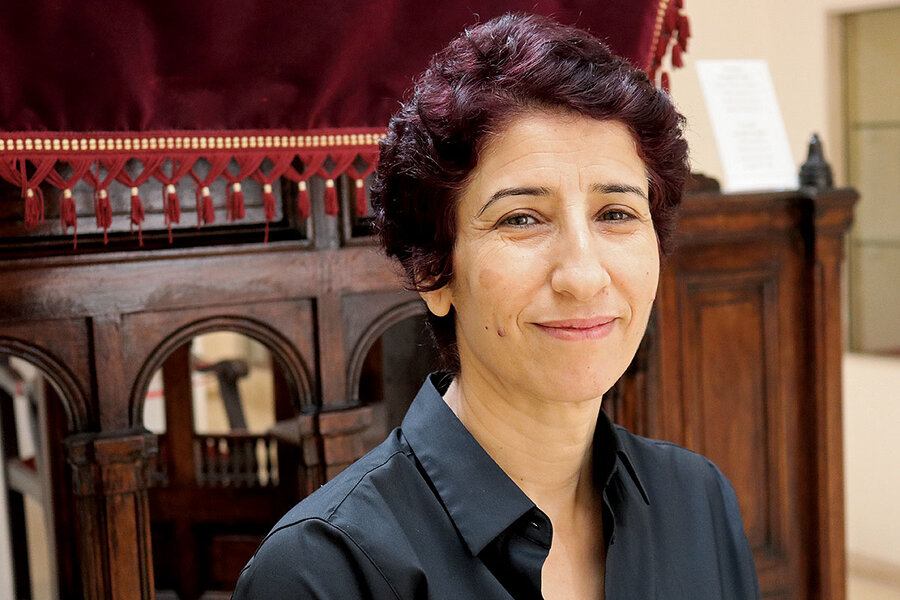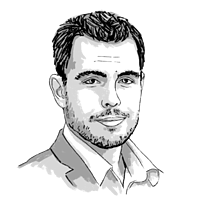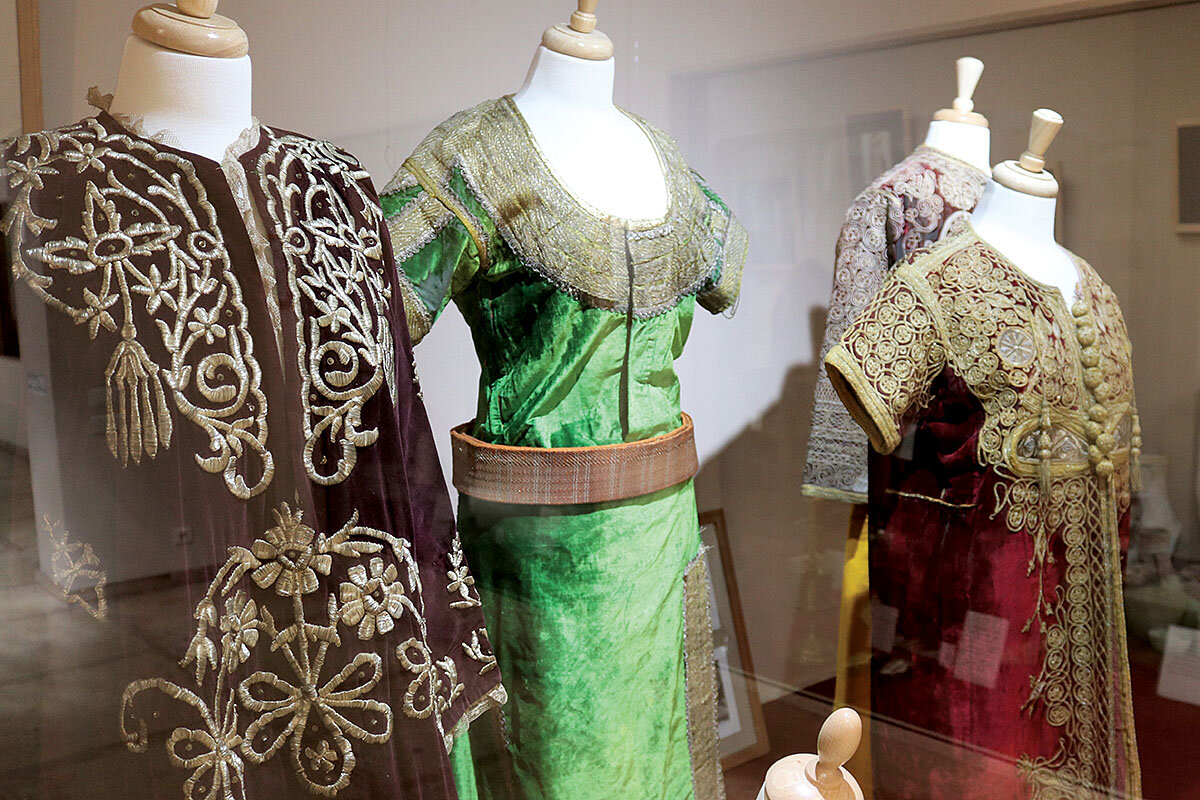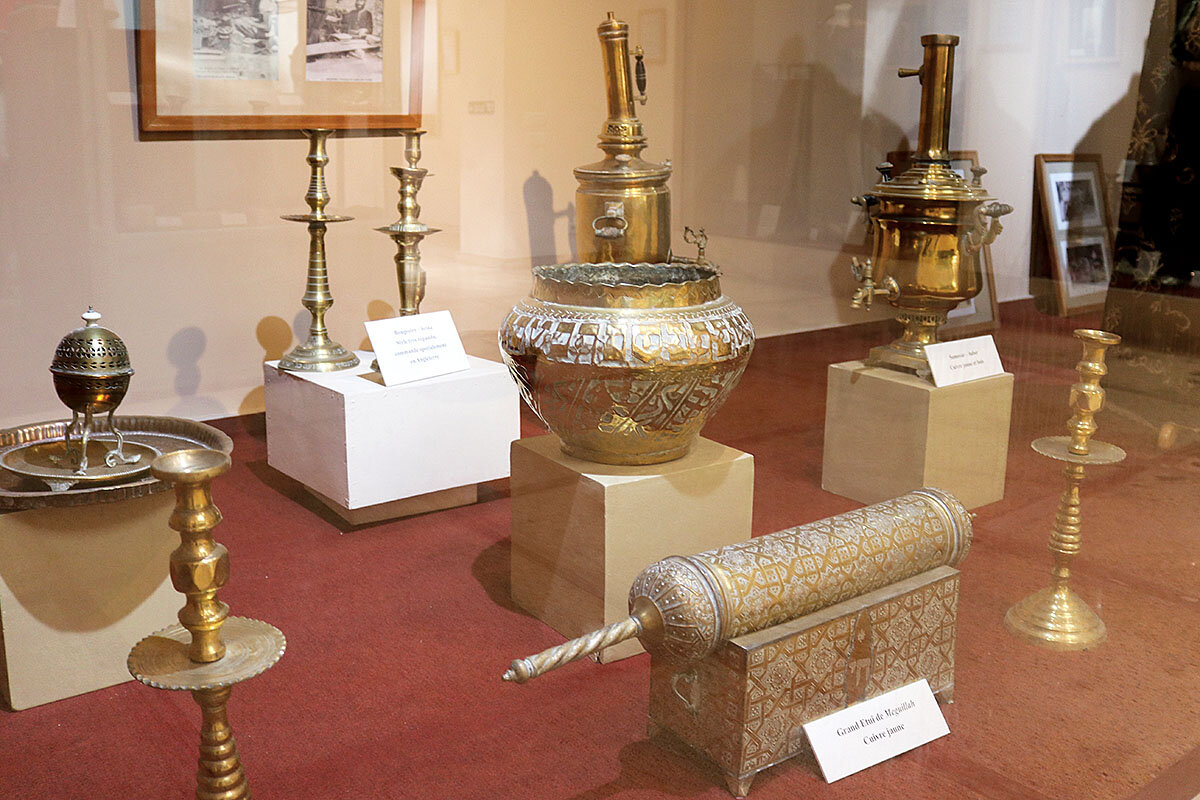Why a Muslim woman safeguards Jewish history for all Moroccans
Loading...
| CASABLANCA, Morocco
Zhor Rehihil walks past a green-cloth-wrapped ancient Torah, ornamental brass lamps, and prayer books she has watched over for more than two decades.
Such artifacts are at home in museums or synagogues in Israel, America, or Europe. Many people are surprised to find them here in Morocco.
“This is not just Jewish history,” says Ms. Rehihil. She traces her finger against a glass-encased, century-old, Judeo-Moroccan script, the Hebrew engraved onto a silver plaque with North African geometric designs. “This is all our history.”
Why We Wrote This
A story focused onIf history shapes identity, then shared history is a cherished resource in today’s world. For Zhor Rehihil, Muslim curator of the Museum of Moroccan Judaism, the shared past provides a path to a better future.
It is unusual to have a Jewish museum in the Arab world. But perhaps even more unusual for visitors: Its curator and co-founder is a Muslim woman.
Yet Ms. Rehihil declares: “This is not surprising. This is natural.”
Here in Morocco, which has seen its Jewish population dwindle almost to the point of being forgotten, Ms. Rehihil has been at the vanguard of safeguarding the community’s history and its place in society – tirelessly teaching Moroccans about a shared past she believes will pave the way for a better future.
Bursting with energy and information, Ms. Rehihil, a leading expert on Arab Jewish culture in the region, is at times the main attraction.
Her high-octane persona is legendary among diplomats in Morocco and researchers worldwide – from America to Israel and across the Arab world – who know her on a first-name basis.
“You simply cannot fully know the Moroccan Jewish community, or why Morocco is such an exception in the region, without Zhor,” says one Western diplomat.
“Zhor is a pioneer,” says Habib Kazdaghli, dean at the University of Tunis-Manouba and an expert in Tunisia’s Jewish minority.
“There are only a few researchers documenting Arab Jewish traditions and heritage, and she is preserving this for the entire world.”
Moroccan heritage
Today at the Museum of Moroccan Judaism, the “Moroccan” clearly stands out.
As carefully designed by Ms. Rehihil, the displays at this disused orphanage from the 1950s not only showcase North African Jews’ heritage, but highlight the fact that they share the same heritage as other Moroccans.
Gliding through the sun-drenched rooms, Ms. Rehihil enthusiastically points out wooden prayer beads that could be at home in a synagogue or a mosque, engraved silver pendants worn by Moroccan women for centuries, and thick gold-thread embroidered green caftan dresses that are a staple for weddings across Morocco.
Surrounded by items that could be found in their parents’ or grandparents’ homes, many Muslim Moroccans ask: Have we been wearing Jewish jewelry and clothes all this time?
“I tell them dresses and jewelry have no religion; they are inanimate objects,” Ms. Rehihil says. “But they do have a culture, and that culture is Moroccan.”
The displays’ goal is to stir memories.
Within minutes of touring the museum or speaking with Ms. Rehihil, many Moroccans recall: My grandfather’s neighbor was Jewish, my father had a Jewish friend, or my mom learned embroidery from her Jewish neighbor.
“Our fathers or grandfathers knew the Moroccan Jewish community very well because they studied in the same schools, they lived together in the same apartment buildings, they visited each other on holidays, they bought from each other and traded,” Ms. Rehihil says.
“Today, everywhere you go there are physical memories from the Jewish community. We Moroccans have a living Jewish memory; it just needs to be reawakened.”
Knowledge gap
Ms. Rehihil’s unlikely career was launched by her own search for a society whose physical memories surrounded her growing up in Casablanca: synagogues, schools, and Jewish quarters.
She, like most Moroccans born in the 1970s onward, knew little of the 1,000-year-old mixed-faith society in which Moroccan Muslims and Jews lived and worked.
Although Morocco did not witness the intercommunal strife or expulsion of Jewish communities that occurred in other Arab states following the 1948 Arab-Israeli war, the draw of better economic opportunities in Europe and Israel sparked a steady exodus of Morocco’s Jews in the 1950s and ’60s.
Morocco’s Jewish community dwindled from 450,000 to a few thousand. As of the 1980s, entire generations of Moroccans were growing up knowing little about their fellow Jewish citizens.
“The only thing these generations know of Jews in general is the Arab-Israeli conflict, the occupation of Palestine, war and killing,” she says. Her voice suddenly becomes urgent. “These new generations are why we are here – why I am here.”
When Ms. Rehihil decided to study Jewish heritage and sites as a student at the National Institute of Heritage and Archaeology in Rabat in 1993, she became among the first Muslims researching Moroccan Judaism in the country.
“In the field of anthropology, you want to learn about others,” she says from behind her desk at her office. “And by learning about others, you learn about yourself and your society.”
Ms. Rehihil faced an uphill climb reaching out to a minority community that had become more withdrawn and more guarded as its numbers dwindled; doors were closed, phone calls unanswered, synagogues remained shuttered.
The Moroccan Jews she approached were skeptical. Why would a Moroccan Muslim be interested in studying their community? Why would she even care?
The reaction from friends and family was similar. “Why are you interested in this research?” she says they asked. “This isn’t your community.”
A professor’s suggestion would save her research and change her career: Contact Simon Levy, a professor of Spanish language at nearby Mohammed V University.
A Jewish Moroccan intellectual who cofounded the Moroccan Communist Party, Professor Levy was a leading figure in Morocco’s independence movement who was jailed by French colonial authorities and was widely respected by Moroccans.
Professor Levy took Ms. Rehihil under his wing, helping her complete research on the Jewish saints of Casablanca.
In 1996, Mr. Levy had a proposal for her: Design and run the first Jewish museum in the Arab world.
“It was an offer I couldn’t refuse,” she says.
Heart of the community
Once an outsider, Ms. Rehihil now radiates energy and projects as a beating heart at the center of the Moroccan Jewish community.
One of her most impactful initiatives is hosting an annual Mimouna, the traditional Moroccan Jewish holiday held at the end of Passover, inviting diplomats and Moroccans of all faiths to observe the uniquely Moroccan celebration, helping it become mainstream in the kingdom.
Ms. Rehihil now hosts a weekly radio show featuring Moroccan Jewish artists, musicians, and students discussing their lives and traditions growing up in Moroccan towns and villages, all in the colloquial Moroccan dialect, darija.
Working under the Foundation of Jewish Moroccan Cultural Heritage set up by Mr. Levy and community leader Serge Berdugo, Ms. Rehihil has helped research and identify tens of Jewish cemeteries and synagogues across the country, paving the way for a preservation and renovation project that got royal backing from King Mohammed VI in 2018.
On a typical tour, Ms. Rehihil likes to keep visitors guessing about her personal background, impishly slipping in asides to throw off people’s assumptions about her faith, such as reading perfect Hebrew from a Torah scroll, and immediately uttering an Arabic saying predominately used by Muslims. She constantly uses “we” and “us” when discussing Moroccans of either faith.
As the tour winds to its conclusion, she playfully asks visitors to guess her background.
When prompted to answer, the vast majority of guests – be they Moroccan, American, Israeli, or Saudi – conclude that she must be Jewish.
“I tell them I am a Moroccan first, a woman second, and third I come from the Muslim community,” Ms. Rehihil says.
“They are always surprised,” she shakes her head. “And I am surprised by their surprise.”
But change is happening. Each year Ms. Rehihil receives 40-50 Moroccan university students and researchers pursuing Moroccan Jewish studies, the vast majority of whom are Muslim.
The museum itself has become a leading tourist destination in Casablanca, allowing her to engage with visitors from Egypt, Saudi Arabia, the United Arab Emirates, and Qatar who are “astonished” that a Jewish museum could even exist on Arab soil.
“Always visitors to the museum are walking away saying, ‘Oh, they are just like us.’” Ms. Rehihil claps her hands and waves them in the air.
“Yes! That is the goal! They are Moroccan like you and me!” she shouts. “That is how it has always been, and that is our way forward.”








